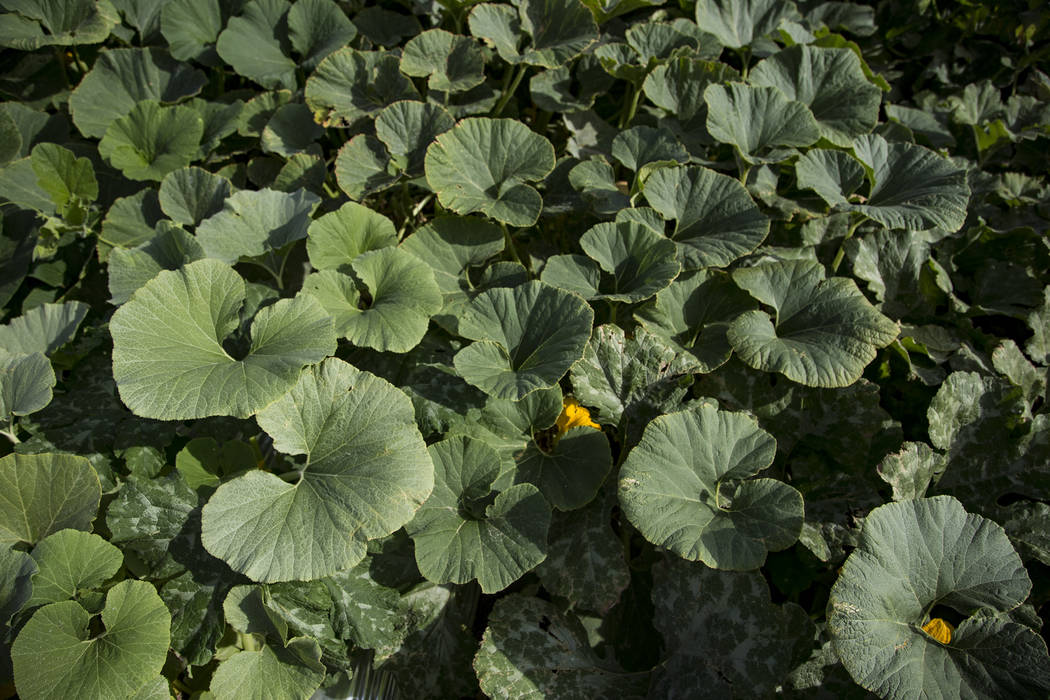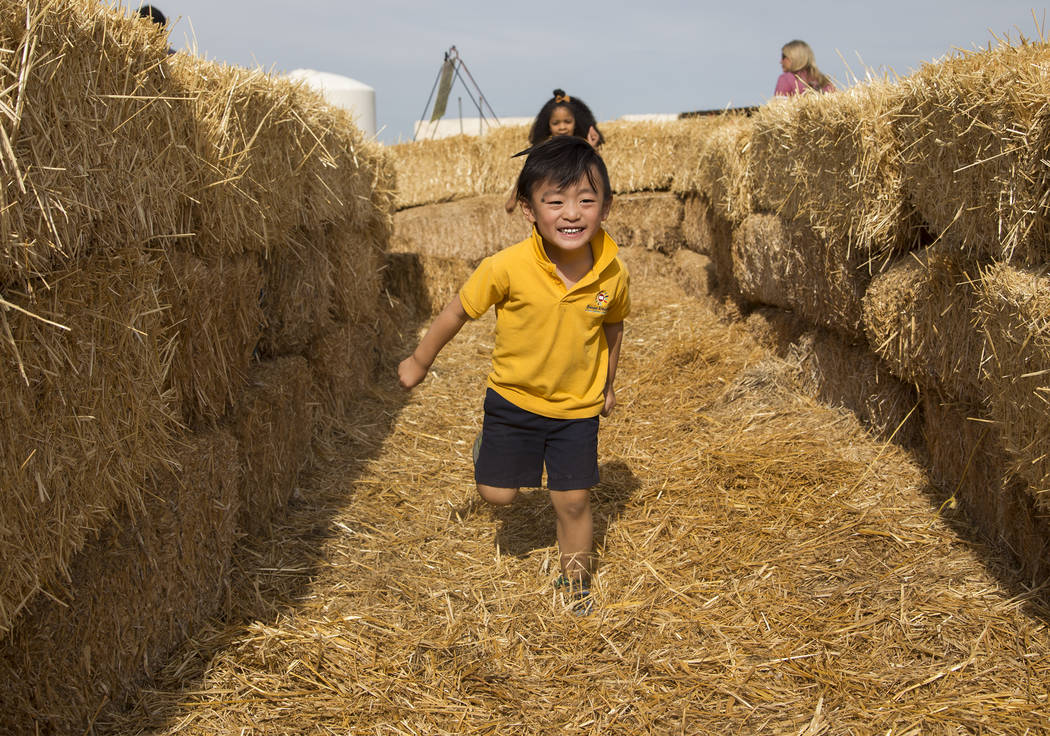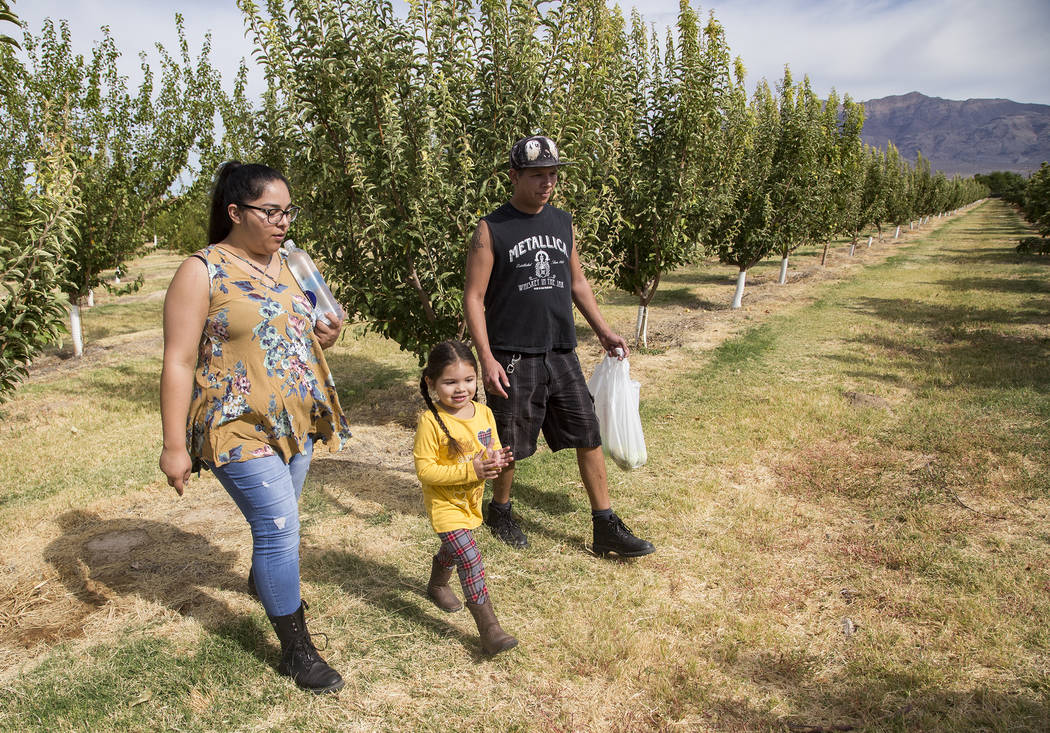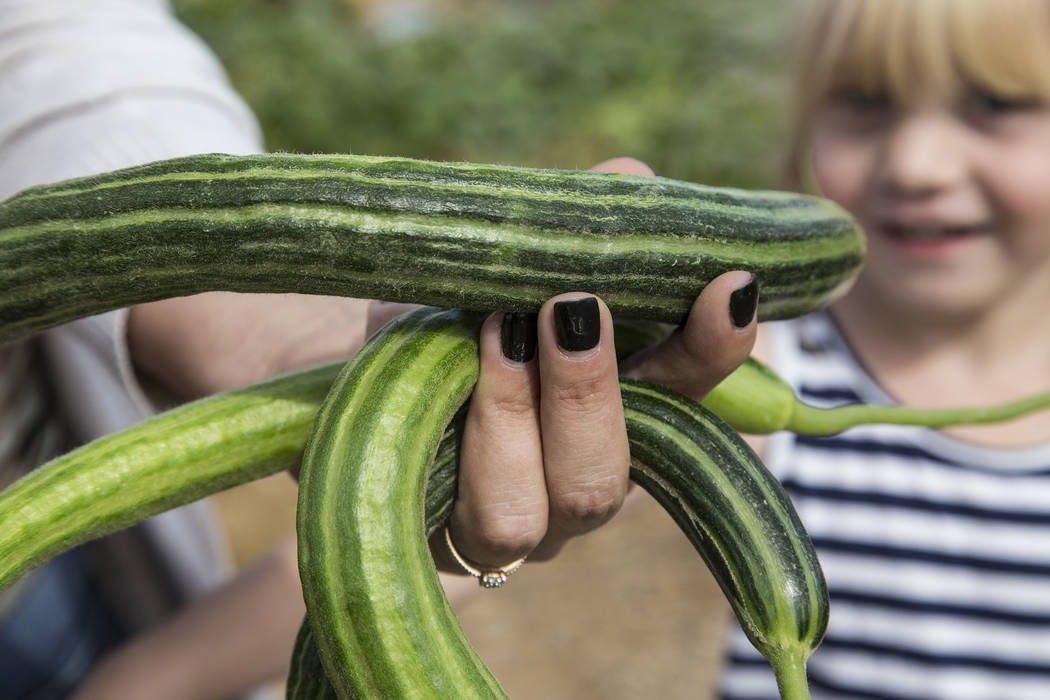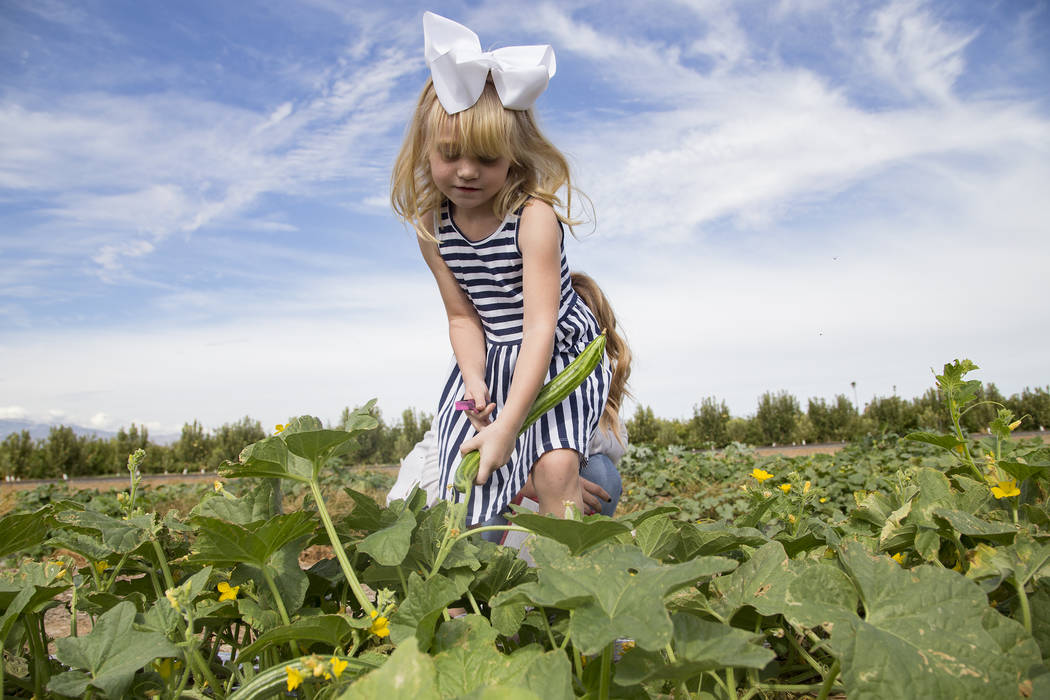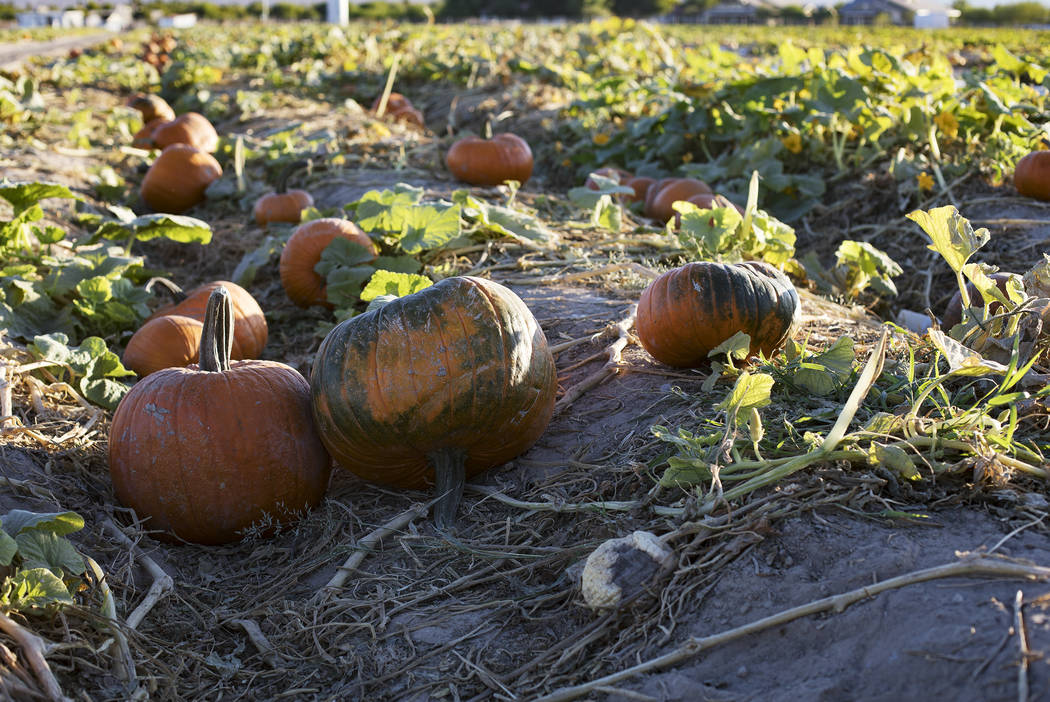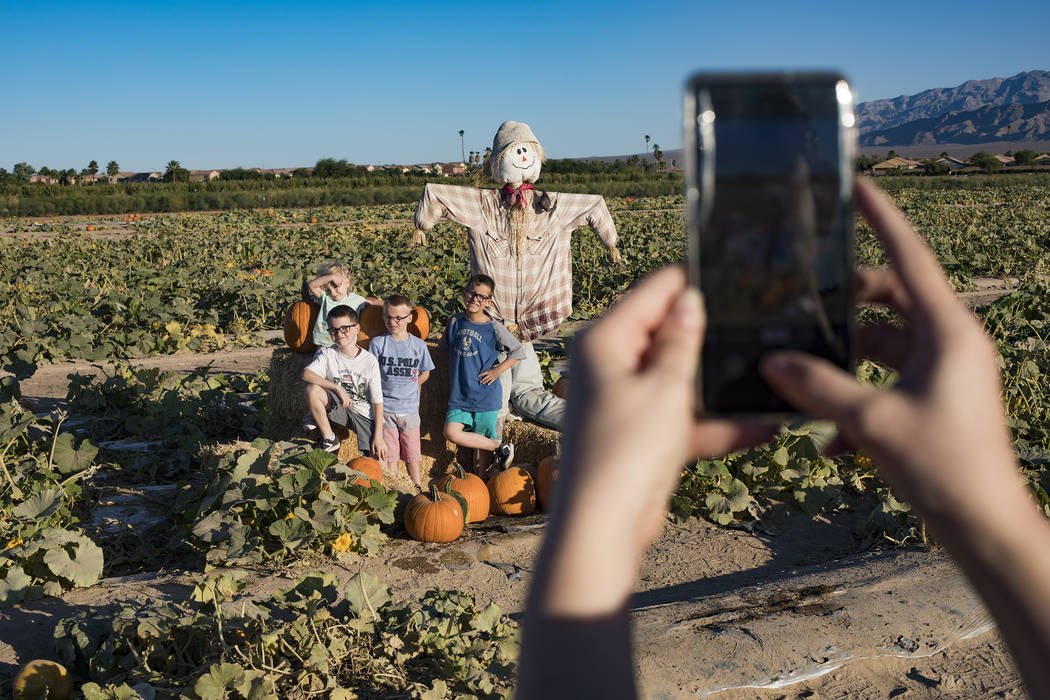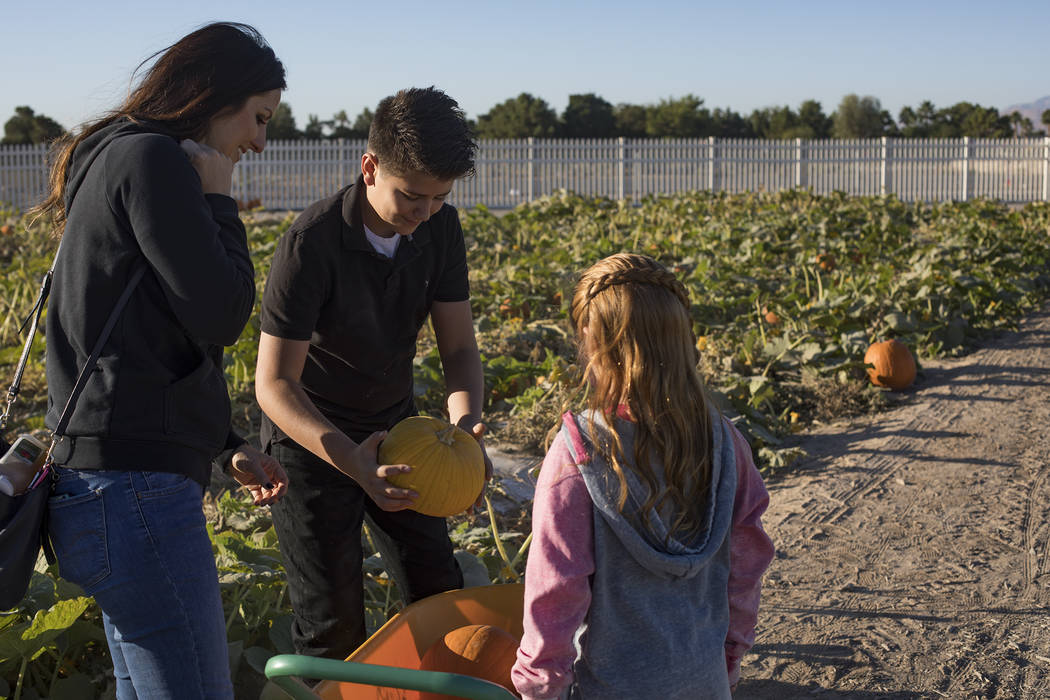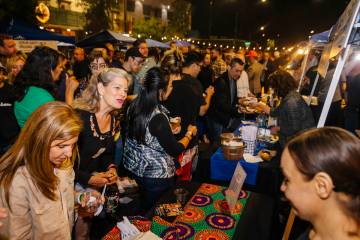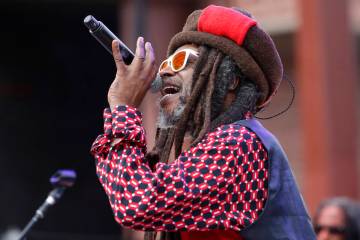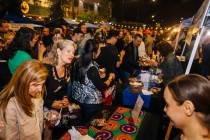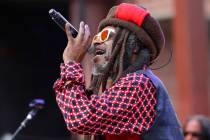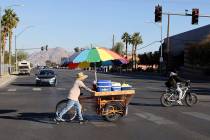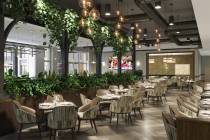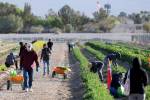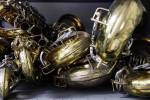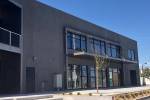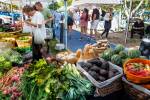Pumpkin patch is open at Gilcrease Orchard in Las Vegas
The sign near the Gilcrease Orchard checkout counters advertised squash blossoms, 25 cents each. But while there were displays of cold apple and pear ciders and bags of kettle corn nearby, there was nary a squash blossom in sight. Where, asked a visitor, were they?
“On the squash,” quipped Mona Rivero with just a trace of a wry smile. “We’re a U-pick orchard.”
Thousands of people visit this 60-acre agricultural oasis every year. While commercially grown crops abounded in parts of the Las Vegas valley decades ago, today the orchard is a lasting example of what nature intended.
Sometimes, orchard director Mark Ruben said, that gets a little confusing for visitors. At the end of September he was having a tough time discouraging people from picking the Pink Lady apples. They weren’t due to ripen until mid-October, and an apple doesn’t ripen off the tree.
“When they go to the grocery store, everything they see is ready,” Ruben said “They come here, they see it and they think it’s ready.”
Brittany Thompson and her 8-year-old daughter, Raelynn, were there on a recent morning with a group of 12 from their church.
“It’s a good educational venue to understand how nature works,” Thompson said. The lesson wasn’t lost on Raelynn, who had just spotted her first apple tree bearing fruit. She also listened with rapt attention while a worker, with the aid of a two-sided, glass-enclosed hive, explained “The Life and Times of Bumblebees” and the vital role they play in agriculture.
“I should have brought a notebook,” Raelynn said.
Nearby, a group of about 150 parents and children on a field trip from Shenker Academy in Summerlin were preparing to tackle the hay-bale maze, a welcome release on a day that had started with a presentation in the orchard’s amphitheater on bees, led by Julie Baird. After the program, they loaded into wagons for a tour of the orchard, followed by the chance to play in the hay maze, see chickens and a desert tortoise and visit a pumpkin patch set aside just for them.
“I think too many kids spend too much time in front of the TV,” Baird said. “It’s good for them to get out and see how our food supply works.”
And, occasionally, smells. Joey Guttman, 4 1/2, wrinkled his nose as he toed at a patch of suspiciously rich soil and asked his mom, Samantha: “What’s that smell?”
“We’re on a farm,” she replied.
Gilcrease originally was a going — and growing — concern, a farm worked by the family of the same name beginning in the 1920s. In a 2002 interview, Ted Gilcrease, who died the following year, said his parents, Leonard and Elda, along with Ted and his brother, Bill, came to Las Vegas in 1920. Although they had 960 acres, the dearth of water supplies meant they were able to farm only about 60. And since the little town of less than 5,000 people couldn’t support a fruit-and-vegetable operation, they branched out into alfalfa and grain.
With the dawn of the Great Depression, Leonard wanted to return to California, but Elda chose to stay on because land meant security. Ted Gilcrease found himself running the whole operation at age 16. Development of water resources eventually enabled them to work 1,500 acres, and at one time, Ted said, their laying hens supplied half of the eggs in Las Vegas.
It was never an easy life, but Ted Gilcrease seemed to inherit a reverence for land from his mother. As he neared the end of his life he wanted to see the much-reduced property survive in perpetuity. According to the orchard’s website, he “commissioned the Board of Trustees to first, preserve the Orchard, second, beautify it, and third, provide educational and recreational activities for the public.”
It’s operated today by a nonprofit foundation, but nonprofits still need to survive financially, and that’s where Ruben comes in. In the 10 years he’s been there, he’s greatly expanded the orchard’s offerings. The website tells visitors what’s available, and a free app helps them find it once they’re there.
“When I came here, they had zucchini and apricots,” Ruben said. “I wouldn’t come out here for two things, but I would come out for seven.”
Ruben knows plenty about raising crops in a harsh climate and has introduced quicker-maturing varieties to beat the heat of summer. Today, Gilcrease produces cider —15,000 gallons this year, all from the orchard’s trees — which has brought it a bit of fame (and is being used by Vegas Valley Winery to produce its hard cider), as have its seasonally available apple-cider doughnuts.
The most popular crop? Pumpkins, with the orchard selling half a million pounds per year. Demand is such that it easily outstrips supply.
“When I came here, pumpkins would run out the first weekend,” Ruben said.
The solution? Many of them are brought in from Utah, where the climate is a little more conducive to growing them.
Just don’t tell the kids.
Contact Heidi Knapp Rinella at Hrinella @reviewjournal.com or 702-383-0474. Follow @HKRinella on Twitter.
If you go
Gilcrease Orchard is at 7800 N. Tenaya Way, at Farm Road, in the northern part of the valley. Hours vary with the season; currently the orchard is open from 7 a.m. to 2 p.m. on Tuesdays, Thursdays, Saturdays and Sundays.
Crops also vary with the season, sometimes the week. Recent availability included Granny Smith apples, cucumbers, butternut squash, spaghetti squash, eggplant and sweet potatoes. Apple and pear cider, kettle corn and peanut butter also are offered for sale. Pumpkins are 50 cents per pound.
For available crops and more information, visit thegilcreaseorchard.org.






